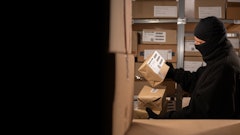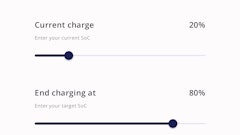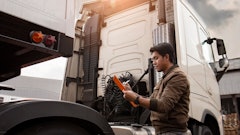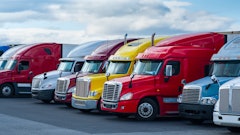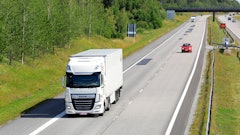
Direct-Store Delivery (DSD) is the subject of a major new report from the Grocery Manufactures Association (GMA) scheduled to be published in the spring.
It will focus on how retailers can work with their trading partners to improve the top line via cost savings and sales growth while improving the shopping experience.
Publication of this report comes at a good time. Retailers and manufacturers are looking for ways to improve the efficiency of procedures that have suppliers delivering product directly to the store. A smooth check-in operation is what all trading partners are looking for. While this has always been the case, intense retail competition today has made flawless DSD procedures more important than ever.
Also fueling this need are the products involved. Many of the top-selling consumer packaged goods sold in grocery stores in 2007 were delivered directly to the store. According to The Nielsen Co., carbonated soft drinks top the list at $17.6 billion in retail sales, followed by refrigerated milk, fresh bread, still/non-carbonated bottled water and light beer.
The good news is that improvements in direct-store-delivery procedures have been steady over the years.
"We are definitely more efficient than we were five years ago," reports Pam Stegeman, vice president of supply chain and technology at GMA, Washington.
"We have better use of technology. What we are seeing is a good increase in retailers wanting to work with DSD manufacturers to improve how things can be done to have better efficiency and be able to meet consumer needs better. And we're starting to really be able to trust each other more as trading partners."
Stegeman lists such DSD improvements as flexible receiving, automated check-in, price and data synchronization.
Coca-Cola Relies On ASNs
The Coca-Cola Co., a leading supplier of DSD products to supermarkets, has invested in DSD technology and procedures over the years. Indeed, the beverage giant has made several advances in all areas of operations, including account management, delivery and merchandising.
"Process standardization and technology advances have been key drivers of our advances in DSD," says Ann Dozier, vice president, strategic industry initiatives at Coca-Cola. "We have been focused on standardizing processes in our warehouses, in our delivery process, and at the shelf.
"We are utilizing technology to enable this process standardization and measure performance. Improved collaboration with our retail partners has also provided improvements in DSD. This includes better connecting our information through initiatives like data synchronization, leveraging retailer data to improve shopper insights that lead to ensuring the perfect assortment and space allocation at the store, and automating our delivery processes."
Coca Cola began deploying an Advanced Shipment Notice (ASN) about five years ago. The process allows the company to scan a single barcode (SSCC—a GS1 standard)) at the point of check-in to receive the entire shipment. The details of that shipment are sent to the retailer's system prior to delivery. So when they scan the single bar code, it receives the entire shipment. On an ad hoc basis, they do random audits to ensure accuracy.
"The advance ship notice has offered the ability to leverage barcodes to check in the entire shipment with one scan of a barcode vs. having to go through and count every item and manually match up our delivery ticket to the retailer's receipt ticket," says Dozier. "The ASN has been a tremendous driver of efficiency in the delivery process because it expedites check-in."
Wider adoption of this procedure has occurred over the past two to three years as retailers become more sophisticated with their backdoor procedures and technology capabilities.
Coke aims to roll out this procedure to other retailers this year.
"It's something that we promote with the entire DSD community," says Dozier who chairs the DSD Committee of GMA. "If all DSD companies have this capability, it speeds up the entire backdoor receiving process."
She says Coca-Cola wants to be the leader in creating the most efficient and effective operational process with its retail partners. "We also want to continue to promote the use of GS1 Standards to ensure those processes can be adopted by all. This allows the retailer to get scale for the maximum efficiency."
Which retailers are leaders in DSD procedures? Dozier declined to name specific companies, but other industry experts point to Wal-Mart and Target as models of excellence.
"The retailers that tend to be best in class are those that are very collaborative with their DSD vendors," explains Dozier. "They're willing to share strategies and align on the processes that need improvement. They are willing to commit resources to deliver results. They are also focused on in-store training and clear communication of strategies that need to be executed.
"Retailers that are working with the CPG DSD companies to identify and develop best practices and then are willing to put the teams in place to execute them are those that are winning in driving efficiency and effectiveness at the store level. They are also winning at the shelf because they are collaborating to ensure shopper needs are met through the right assortment and the highest levels of in stocks," she says.
DEX, NEX Transmissions
Another form of DSD receiving that is deployed more nowadays is electronic invoicing in the retail facility for product being delivered via DEX (Direct Exchange) and NEX (Network Exchange). DEX links the computers of supplier and retailer at the back door, while NEX links the computers of supplier and retailer over telephone lines.
"Basically, the computer does all the work. It measures to make sure that everything is the proper cost so the receiver just verifies quantity," explains Ron Kimmat, a solution engineer with Retalix USA in Delphos, OH. "If there are any discrepancies, they are sent back to the vendor electronically in a different file. The driver has the ability to make the corrections, or those corrections have to happen from his corporate headquarters. So it speeds up the receiving process."
While DEX and NEX receiving are a few years old, they have not been deployed widely because a lot of smaller manufacturers didn't have the proper technology until recently, according to Kimmat, who says one the DEX clients of Retalix for years has been Bashas, a grocery chain in Arizona.
What some supermarkets are now doing, he explains, is having handhelds that the vendors are required to come in and use. The order is entered into the unit that provides the DEX file to send over.
At Safeway Inc., every division is responsible for its own DEX certification with any DSD supplier; NEX certifications are processed at the corporate level. The format of the DEX/NEX transmissions that Safeway accepts adheres to the GS1 guidelines.
Regardless of the type of receiving deployed, experts say DSD will be critical for retail success going forward.
"I think we'll see a growing labor shortage in stores in the future. DSD offers a lot of advantages as in-store labor becomes harder and harder to find," says GMA's Stegeman.
"Retailers will really take better advantage of what DSD offers, which is having people in the store to be able to help with the merchandising and help with the in-store experience. DSD companies have the basic feet on the street. They have people who know the geography, who know the consumers in that area, and who know the stores themselves," she says.



